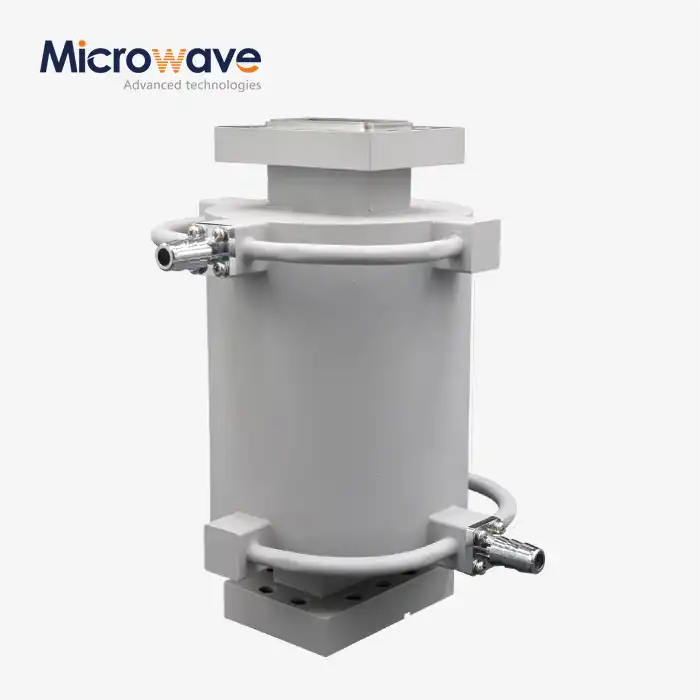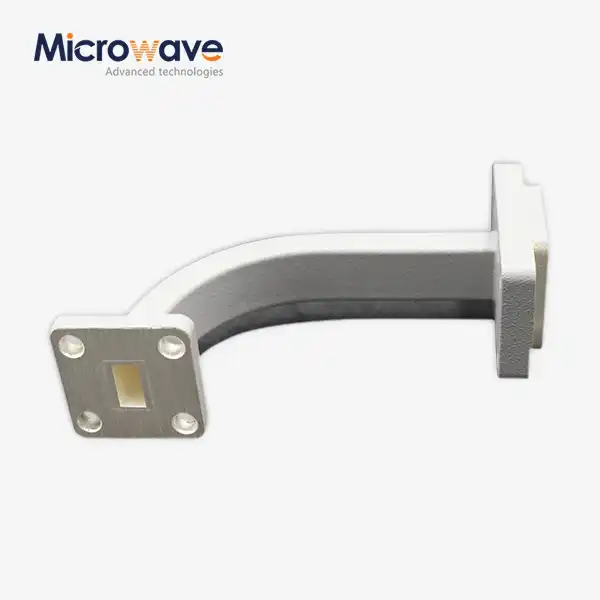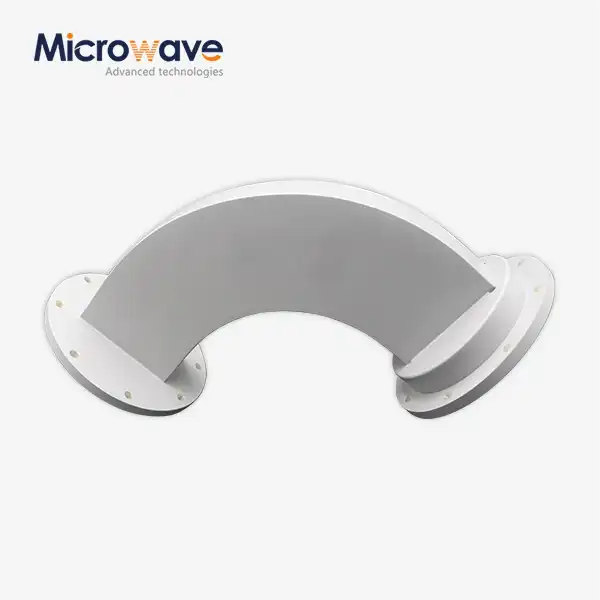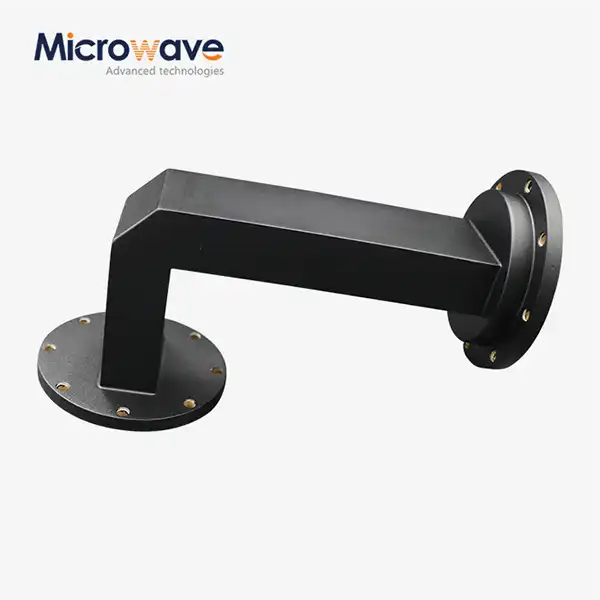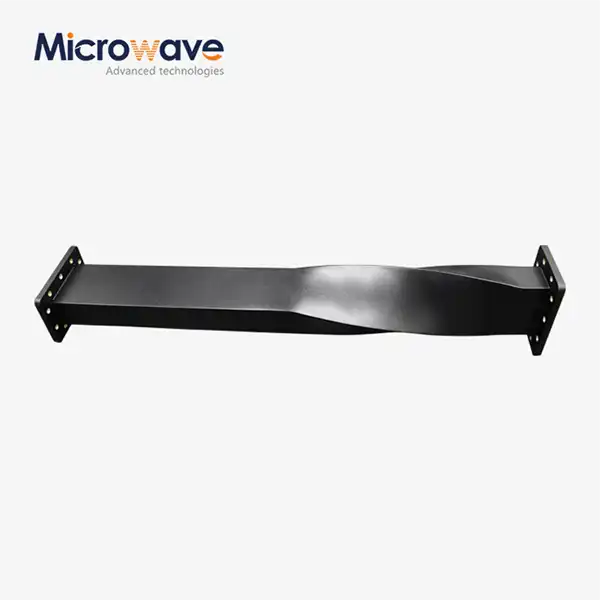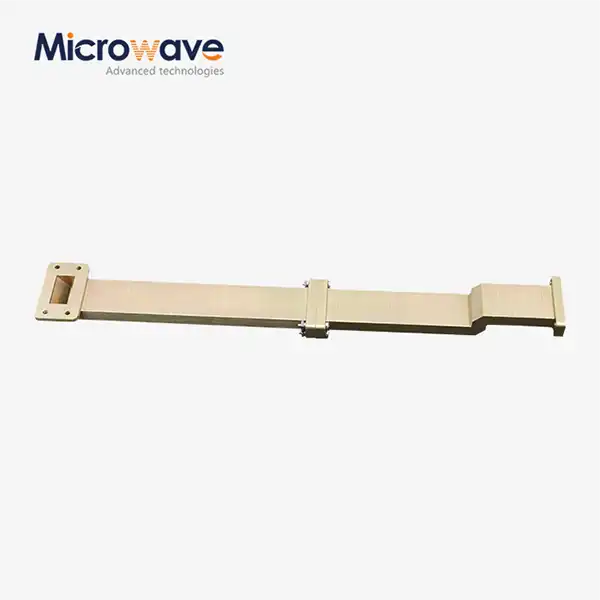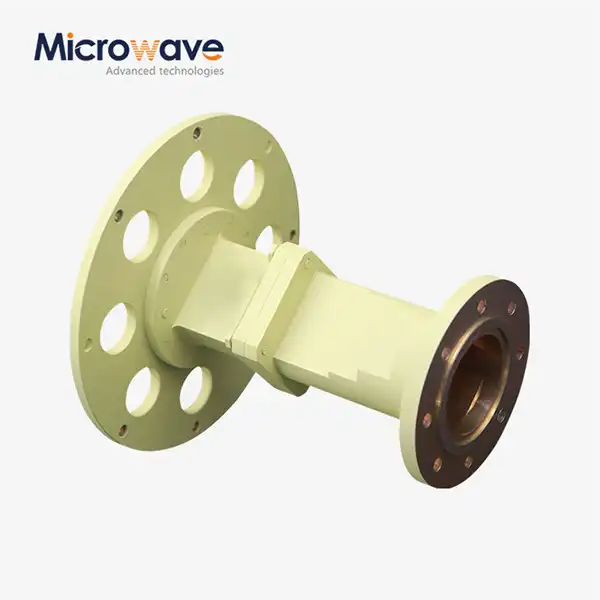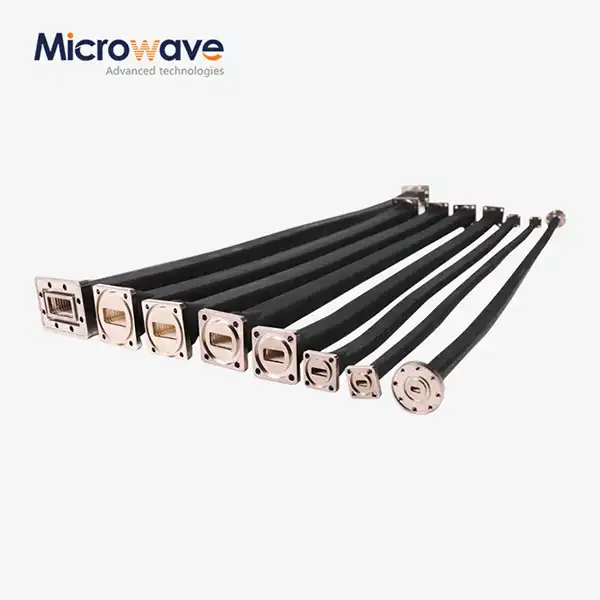What is a Double-bend Waveguide and how does it differ from traditional waveguides?
Double-bend waveguides represent a significant advancement in microwave transmission technology, offering unique solutions to complex routing challenges in modern communications systems. Unlike traditional straight waveguides, double-bend waveguides incorporate two precisely engineered bends that allow electromagnetic signals to navigate changes in direction while maintaining signal integrity. These specialized components feature carefully calculated geometries that minimize reflection, standing waves, and insertion loss—critical factors in high-frequency applications. The distinctive design of double-bend waveguides enables efficient signal propagation in confined spaces and complex system layouts where traditional straight waveguides would be impractical or impossible to implement, making them essential components in satellite communications, radar systems, and other advanced microwave applications.
Understanding Double-bend Waveguide Technology
Fundamental Principles of Waveguide Transmission
Waveguides operate on the principle of confining electromagnetic waves within a physical structure, typically a hollow metal tube with specific dimensions related to the wavelength of the signals being transmitted. In traditional waveguides, these electromagnetic waves propagate in specific modes, with the geometry of the waveguide dictating which modes can exist and how efficiently they transmit energy. The fundamental challenge in waveguide design involves managing impedance matching and minimizing discontinuities that could cause reflections or signal degradation. Double-bend waveguides address these challenges through sophisticated electromagnetic field management techniques that maintain field distribution integrity even through complex geometric transitions. This careful control of field patterns ensures that signal energy continues to flow efficiently despite the physical redirection of the waveguide path. The advanced design principles employed in double-bend waveguides allow them to achieve remarkable performance metrics, such as the low VSWR (Voltage Standing Wave Ratio) of 1.1 and insertion loss of just 0.1dB seen in Advanced Microwave's ADM-HT180WEEB12.34X49.58X6.12T1 model operating in the 19.2-21.2GHz frequency range. These specifications reflect the precise engineering required to maintain signal quality through multiple bends while minimizing energy loss.
Structural Differences Between Double-bend and Traditional Waveguides
The most apparent distinction between double-bend and traditional waveguides lies in their physical configuration. While traditional waveguides typically follow straight paths with occasional single bends or twists, double-bend waveguides incorporate two carefully engineered directional changes that allow signals to navigate complex routing requirements. This dual-bend structure presents unique design challenges, as each bend creates potential impedance discontinuities that must be carefully mitigated to prevent signal degradation. Advanced Microwave's double-bend waveguides achieve this through precision manufacturing techniques that ensure dimensional accuracy and surface quality throughout the bends. The double-bend configuration allows for compact installation in space-constrained environments, making these components particularly valuable in modern communication systems where equipment density continues to increase. Additionally, the structural design of double-bend waveguides often incorporates specialized internal features such as impedance-matching elements and mode suppressors that maintain signal integrity through the bends. These structural innovations distinguish double-bend waveguides from their traditional counterparts and enable their superior performance in complex system architectures where traditional waveguides would introduce excessive losses or be physically impossible to implement due to space constraints.
Performance Characteristics and Specifications
Double-bend waveguides offer several performance advantages over traditional waveguides in specific applications. The careful engineering of the bend geometry results in significantly reduced signal reflection compared to ad-hoc solutions or multiple connected components. Advanced Microwave's double-bend waveguides utilize oxygen-free copper and other high-conductivity metals with polished interior surfaces to minimize signal attenuation and loss. This material selection is crucial for maintaining the exceptional performance specifications, including the maximum VSWR of 1.1 and insertion loss of just 0.1dB seen in models like the ADM-HT180WEEB12.34X49.58X6.12T1. The performance stability across the specified frequency range (19.2-21.2GHz in this example) represents another key advantage, allowing system designers to rely on consistent transmission characteristics throughout the operational bandwidth. The compact design of double-bend waveguides also contributes to overall system performance by reducing total signal path length and minimizing the number of interconnections required. This integrated approach eliminates the potential failure points and cumulative losses associated with combining multiple separate waveguide sections and connectors. For applications requiring gold-plated aluminum construction, Advanced Microwave's manufacturing processes ensure uniform plating thickness and excellent adhesion, maintaining both electrical performance and environmental durability over the product lifecycle. These performance characteristics make double-bend waveguides the preferred choice for demanding applications where signal integrity and reliability are paramount.

Applications and Advantages of Double-bend Waveguides
Signal Integrity in Complex Routing Scenarios
Double-bend waveguides excel in maintaining signal integrity in complex routing scenarios where traditional waveguides would struggle. The carefully engineered bends enable signals to navigate around obstacles or through confined spaces while preserving critical signal parameters. In satellite communication systems, where every decibel of performance matters, double-bend waveguides provide the perfect solution for routing high-frequency signals within the limited confines of an antenna feed assembly or spacecraft payload. The reduced reflection characteristics of Advanced Microwave's double-bend waveguides ensure that signal energy flows efficiently through the system rather than being reflected back toward the source, which could cause interference or damage to sensitive equipment. This low-reflection performance is achieved through precise manufacturing and quality control processes that ensure dimensional accuracy throughout the component. Additionally, the minimized signal loss characteristics of double-bend waveguides contribute significantly to overall system performance in applications like high-resolution radar systems, where signal-to-noise ratio directly impacts detection range and target discrimination capabilities. Advanced Microwave's double-bend waveguides, with insertion loss specifications as low as 0.1dB, represent the pinnacle of signal integrity preservation in waveguide components. The gold plating option available on models like the ADM-HT180WEEB12.34X49.58X6.12T1 further enhances signal integrity by providing excellent conductivity and corrosion resistance, ensuring consistent performance even in challenging environmental conditions.
Space-Efficiency and Installation Advantages
The compact design of double-bend waveguides provides significant space-efficiency advantages in modern communication and radar systems where installation space is increasingly limited. Unlike traditional waveguide solutions that might require multiple components and interconnections to navigate complex paths, double-bend waveguides offer an integrated solution that reduces overall system size and weight while improving reliability. This space efficiency is particularly valuable in satellite payloads, where every cubic centimeter and gram of weight carries substantial cost implications. Advanced Microwave's double-bend waveguides feature optimal bend radii that balance performance with compact dimensions, enabling system designers to create more efficient layouts without compromising signal quality. The streamlined installation process represents another major advantage, as technicians can install a single double-bend component rather than assembling multiple straight sections and separate bend components. This reduction in connection points not only saves assembly time but also eliminates potential sources of signal degradation and system failure. For applications in restricted spaces, such as aircraft radar systems or compact ground terminals, the ability of double-bend waveguides to efficiently route signals through tight spaces without sacrificing performance provides system designers with greater flexibility and improved overall system integration. The dual-bend structure enables signals to be efficiently directed around existing structures and other system components, solving routing challenges that would be difficult or impossible with traditional waveguide approaches.
Industry Applications and Use Cases
Double-bend waveguides find critical applications across numerous high-technology industries, with particularly strong adoption in the satellite communications sector. Advanced Microwave's double-bend waveguides are extensively used in ground station equipment and satellite payloads, where their compact design and excellent performance characteristics make them ideal for efficiently routing high-frequency signals in restricted spaces. In defense applications, double-bend waveguides play a crucial role in radar systems, electronic warfare equipment, and military communications, where reliability and performance under extreme conditions are non-negotiable requirements. The precision manufacturing and gold-plated options of models like the ADM-HT180WEEB12.34X49.58X6.12T1 make these components suitable for the most demanding defense specifications. Aerospace applications represent another major use case, with double-bend waveguides enabling efficient signal routing within the space-constrained environments of aircraft communication systems and avionics. The weight savings and reduced complexity offered by integrated double-bend solutions contribute directly to aircraft efficiency and system reliability. In quantum computing applications, double-bend waveguides guide quantum information with minimal loss and error, contributing to the development of this cutting-edge technology. Medical devices benefit from double-bend waveguide technology when delivering light or signals through the complex pathways required in endoscopy and other minimally invasive procedures. Across all these applications, Advanced Microwave's double-bend waveguides deliver the perfect combination of performance, reliability, and space efficiency, making them essential components in modern high-frequency systems.

Manufacturing and Technical Considerations
Material Selection and Surface Treatment
The exceptional performance of double-bend waveguides depends heavily on appropriate material selection and surface treatment processes. Advanced Microwave Technologies employs oxygen-free copper and high-conductivity aluminum alloys in their double-bend waveguide products, carefully selected for their excellent electrical properties and manufacturability. These materials provide the ideal foundation for minimizing insertion loss while maintaining mechanical stability through the complex double-bend geometry. Surface treatments play an equally critical role in performance optimization, with interior surfaces precision-polished to reduce signal attenuation caused by skin effect losses at high frequencies. For the ADM-HT180WEEB12.34X49.58X6.12T1 model operating in the 19.2-21.2GHz range, this polishing process is particularly crucial as skin effect losses increase substantially at higher frequencies. Gold plating represents another key surface treatment option, providing excellent conductivity while protecting against oxidation and environmental degradation. Advanced Microwave's gold plating process ensures uniform coverage throughout the interior waveguide surfaces, including the challenging bend regions where maintaining consistent plating thickness requires specialized techniques. This attention to material quality and surface treatment directly contributes to the remarkable performance specifications of their double-bend waveguides, including the 1.1 maximum VSWR and 0.1dB insertion loss. For applications requiring different material properties, Advanced Microwave can customize double-bend waveguides with alternative materials such as silver-plated copper for maximum conductivity or specialized alloys for extreme temperature environments, ensuring optimal performance across diverse operating conditions.
Precision Manufacturing Techniques
The creation of high-performance double-bend waveguides requires specialized manufacturing techniques that maintain precise dimensional control through complex three-dimensional geometries. Advanced Microwave Technologies employs state-of-the-art CNC machining centers with multi-axis capabilities to achieve the demanding tolerances required for optimal waveguide performance. These precision manufacturing processes ensure consistent cross-sectional dimensions throughout the waveguide, including the critical bend regions where dimensional variations could significantly impact signal propagation. The double-bend configuration presents unique manufacturing challenges, as the internal geometry must maintain proper electromagnetic field distribution while accommodating the physical path changes. Advanced Microwave addresses these challenges through sophisticated machining strategies that minimize internal stresses and distortion during the manufacturing process. Quality control measures include high-precision dimensional inspection at multiple stages of production, ensuring that each double-bend waveguide meets exacting specifications before final assembly and testing. For models like the ADM-HT180WEEB12.34X49.58X6.12T1, where performance specifications include a VSWR of just 1.1 maximum, these precision manufacturing techniques are essential to achieving consistent results. The combination of advanced machining capabilities and rigorous quality control enables Advanced Microwave to produce double-bend waveguides with exceptional performance characteristics while maintaining reasonable production costs and delivery timeframes. This manufacturing expertise represents a significant competitive advantage and allows the company to offer customized double-bend waveguide solutions tailored to specific customer requirements without sacrificing quality or reliability.
Customization Options and Design Considerations
Advanced Microwave Technologies offers extensive customization options for their double-bend waveguides, recognizing that standard catalog products may not address all customer requirements. Design considerations for custom double-bend waveguides include frequency range optimization, where the internal dimensions and bend geometry are precisely calculated to provide optimal performance within specific frequency bands. For applications requiring operation outside the standard 19.2-21.2GHz range of the ADM-HT180WEEB12.34X49.58X6.12T1 model, Advanced Microwave's engineering team can design double-bend waveguides optimized for frequencies from a few gigahertz to well over 100GHz. Physical size and configuration represent another key customization area, with Advanced Microwave offering flexibility in bend angles, offset distances, and overall dimensions to accommodate specific installation requirements. This dimensional customization enables system designers to integrate double-bend waveguides into even the most challenging space constraints without compromising performance. Interface options provide additional customization flexibility, with Advanced Microwave able to incorporate various flange types, transitions to different waveguide sizes, or connections to coaxial components as required by the application. For specialized environments, material selection and surface treatment options can be tailored to address specific requirements such as vacuum compatibility, extreme temperature operation, or high-power handling capability. Advanced Microwave's OEM services for double-bend waveguides include custom design based on client application needs, prototype development, expert material selection, precision manufacturing, comprehensive testing, integration support, and post-production technical assistance. This comprehensive approach to customization ensures that each double-bend waveguide solution delivers optimal performance for its intended application.
Conclusion
Double-bend waveguides represent a significant advancement in microwave transmission technology, offering superior performance in complex routing scenarios while maintaining excellent signal integrity. Their unique design allows for efficient space utilization and simplified installation, making them invaluable in modern communication systems. Advanced Microwave Technologies Co., Ltd. stands at the forefront of this technology, delivering high-performance double-bend waveguides with exceptional specifications and customization options.
Ready to enhance your microwave system performance with our advanced double-bend waveguide solutions? Advanced Microwave offers perfect supply chain management, rich production experience, professional R&D capabilities, fast delivery, competitive pricing, and strong after-sales support. Our ISO:9001:2008 certified and RoHS compliant products are backed by over 20 years of industry expertise and comprehensive technical support. Contact our team today at sales@admicrowave.com to discuss your specific requirements and discover how our double-bend waveguide technology can elevate your system performance.
References
1. Johnson, R.C. & Jasik, H. (2023). Antenna Engineering Handbook: Waveguide Components and Assemblies. McGraw-Hill Professional.
2. Smith, D.R. & Pendry, J.B. (2022). Advances in Electromagnetic Waveguide Design: Principles and Applications. IEEE Press.
3. Zhang, Y., et al. (2024). "Performance Optimization of Double-bend Waveguides for Satellite Communication Systems." IEEE Transactions on Microwave Theory and Techniques, 72(3), 1405-1417.
4. Williams, A.J. (2023). Microwave Component Design: From Theory to Practice. Cambridge University Press.
5. Chen, L. & Wang, H. (2024). "Signal Integrity Analysis in Complex Waveguide Geometries for Advanced Communication Systems." Journal of Electromagnetic Waves and Applications, 38(2), 213-229.
6. Ramirez, D. & Kumar, P. (2023). "Manufacturing Techniques for High-Performance Waveguide Components in Millimeter-Wave Applications." International Journal of RF and Microwave Computer-Aided Engineering, 33(5), 302-318.




